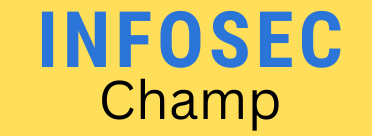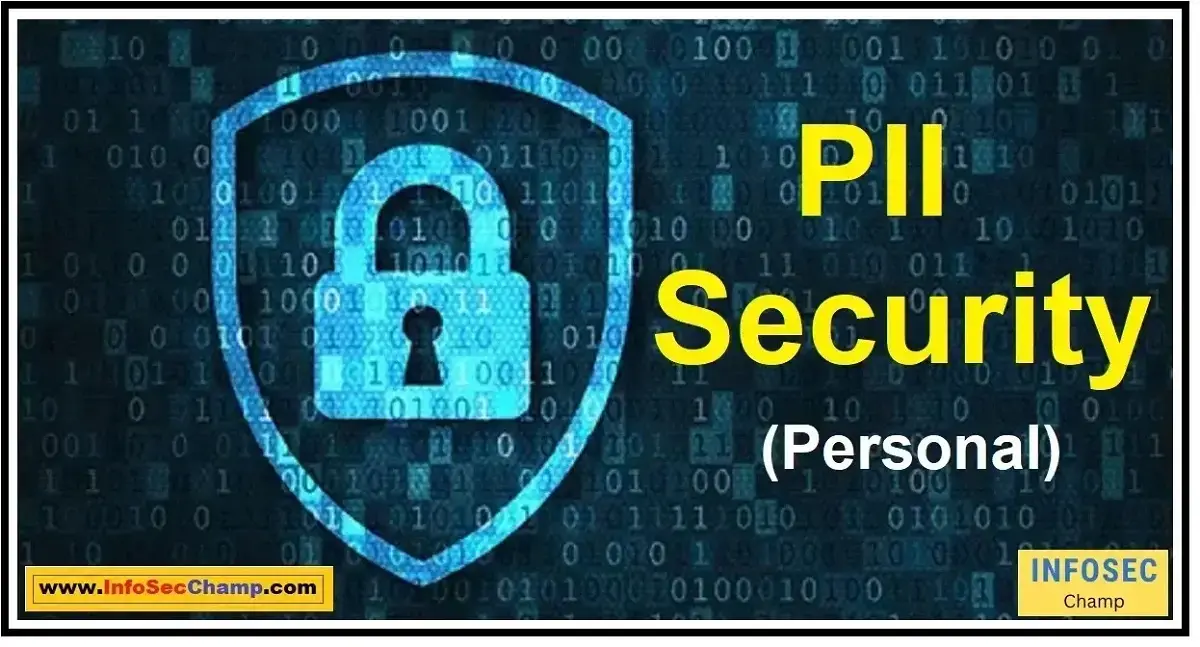Discover the importance of implementing PII security best practices to protect Personally Identifiable Information (PII) from potential threats. Learn about the key components of a strong PII security strategy, including encryption, access controls, and regular backups. Stay informed and protect your sensitive information with the best practices for PII security.
The activity of safeguarding delicate data pertaining to a person’s identity is known as “PII security,” or personally identifiable information security. The entire name, address, social security number, driver’s license number, financial information, and other details are examples of this kind of information, but they are not the only ones.
You cannot exaggerate how crucial PII security is. The collection, storage, and sharing of personal data are more common than ever in the modern digital era. A rise in data breaches and other security issues that potentially endanger sensitive information has also been brought on by the increased gathering and sharing of personal information.
The potential harm that can be caused by a data breach is one of the main reasons why PII protection is so crucial. The wrong people could utilize someone else’s personal information for identity theft, financial fraud, and other bad things. In addition to having a negative effect on the reputation of the company in charge of protecting the information, this could have substantial financial and personal repercussions for the affected people.
PII security is crucial from a legal and regulatory standpoint, as well as from the standpoint of preventing harm to people. Organizations are required by law in many nations to secure customer information, and breaking these regulations can result in hefty fines and other legal repercussions.
Organizations need a thorough security plan in place if they want to secure PII efficiently. Technical, administrative, and physical controls should all be a part of this approach because they can all help to stop, find, and handle security issues.
Putting best practices into effect is one of the crucial elements of a PII security strategy. This entails routinely completing risk assessments, putting encryption technology into use, limiting access to sensitive information, and regularly offering training and awareness programs to personnel.
Putting a PII security policy in place is a crucial component of PII security. The duties of employees and the protocols they should adhere to in order to preserve sensitive information should be specified in this policy. To ensure that this policy remains applicable and effective in light of evolving security concerns, it should also be frequently reviewed and updated.
Finally, in order to add an extra layer of security for sensitive data, enterprises should think about deploying additional security technologies like firewalls, intrusion detection systems, and anti-malware solutions.
As a result, firms must take a proactive stance in regard to PII protection, which is a crucial issue. Organizations can successfully protect sensitive information and lower the risk of data breaches by putting best practices into practice, establishing strict security policies, and utilizing technology solutions. Corporations must take this issue seriously and commit the resources and solutions required to protect sensitive information. Failure to prioritize PII protection can have major ramifications for both individuals and organizations.
How can organizations effectively protect PII from data breaches?
Organizations place high importance on safeguarding personally identifiable information (PII) from data breaches since these incidents can have serious repercussions for both the company and its clients. The effective protection of PII by enterprises against data breaches will be covered in this article.
- Develop a robust security policy: The handling and storage of sensitive data, access control, and incident response protocols are all included in a complete security policy that should be developed by organizations to protect PII. To make sure the policy stays applicable and useful, it should be frequently reviewed and updated.
- Implement encryption: Use encryption to prevent data breaches of personally identifiable information. In order to make it more difficult for hackers to access the data in the case of a breach, organizations should make sure that sensitive data is encrypted both in transit and at rest.
- Use multi-factor authentication: Before users can access sensitive data, they must first provide various means of identity, such as a password and a one-time code delivered to their phone. Unauthorized users will find it much harder to access PII now.
- Conduct regular security audits: Regular security audits can help firms find potential security gaps and vulnerabilities, enabling them to take action before a breach happens. To ensure unbiased and thorough evaluations, audits should be carried out by impartial third parties.
- Train employees: Employee education is essential to safeguarding PII against data breaches. Employees should be educated by their employers on the value of security, safe handling procedures for personal information, and the effects of data breaches. Additionally, they want to receive instruction on how to spot hazards like phishing schemes and how to react to them.
- Limit access to PII: Only those employees who need it to carry out their job obligations should have access to PII. To guarantee that only authorized individuals have access to sensitive data, organizations should have access control mechanisms in place.
- Regularly update software and systems: Updating software and systems frequently can help firms keep ahead of security risks. All software and systems should be maintained up to date, and any vulnerabilities should be immediately fixed, according to organizations.
- Monitor network activity: Monitoring systems should be put in place by businesses to keep track of network activity and spot any dangers. This may entail keeping an eye out for anomalous network activity or looking for indicators of malware or illegal access.
- Have a plan in place for data breaches: Organizations should have a strategy in place for handling data breaches, which should include steps for locating and containing the breach, alerting clients and regulatory organizations, and carrying out investigations.
In conclusion, safeguarding PII from data breaches necessitates a thorough strategy that includes a number of processes and the application of best practices. Develop a strong security policy, utilize encryption, apply multi-factor authentication, do regular security audits, train staff, restrict access to PII, keep software and systems up to date, keep an eye on network activity, and have a data breach plan in place. Organizations may effectively protect PII and reduce the risk of a data breach by following these measures.
Why are best practices for PII security necessary for businesses? | What are the PII requirements for protecting sensitive information?
Security of personally identifiable information (PII) is essential for companies of all sizes. The protection of sensitive information from threats is more crucial than ever in the modern digital age. Businesses must follow best practices for PII security for a number of reasons.
First and foremost, businesses are quite concerned about data breaches. Businesses must put protective measures in place for their sensitive data given the rise in cyberattacks. The risk of sensitive information being stolen or exploited can be reduced and data breaches can be avoided with the help of best practices for PII protection. This safeguards not only the organization but also its clients and workers, who depend on it to maintain the privacy of their personal data.
Second, many organizations are required by law to protect customer information. Businesses are required by law in many nations to protect sensitive data, including customer information, social security numbers, and financial data. These rules have heavy financial penalties for breaking them, which can be expensive and bad for a company’s reputation. Businesses can comply with these regulatory requirements and stay out of trouble by putting best practices for PII security into effect.
Thirdly, firms can increase customer trust and reputation by following best practices for PII security. Customers are more conscious of the value of securing personal information in today’s competitive market and anticipate businesses to take steps to secure their data. By putting best practices for PII security into practice, businesses may demonstrate to customers that they take security seriously, which in turn fosters customer trust.
Best practices for PII protection can also assist companies in safeguarding their intellectual property. Any company’s intellectual property is a valuable asset, therefore keeping it safe from theft or misuse is crucial. Best practices for PII security implementation can assist prevent unauthorized access to sensitive data and lower the danger of intellectual property being stolen or used improperly.
Best practices for PII security can also assist companies in maintaining their regulatory compliance. Strict guidelines on how sensitive information must be protected are in place in many businesses. Businesses may address these needs and make sure they are in compliance with the law by putting best practices for PII security into effect.
In conclusion, businesses need to implement best practices for PII protection for a number of reasons. Businesses can guarantee that their information is secure and their customers are protected by safeguarding sensitive information from potential threats, adhering to legal requirements, enhancing reputation and customer trust, safeguarding intellectual property, and maintaining compliance with regulations. To lessen the danger of data breaches and guarantee the protection of sensitive information, enterprises must follow best practices for PII security.
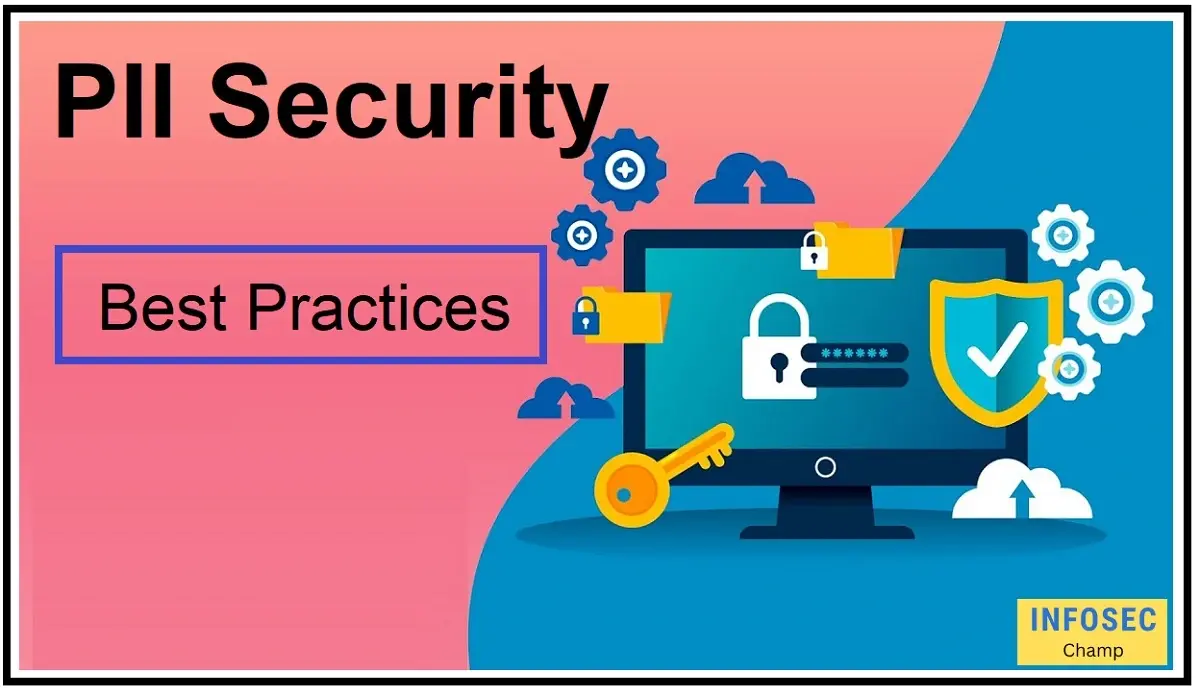
What are the 25 best practices for PII security? | What steps are taken to implement PII security best practices?
Any information that may be used to identify a specific person, such as their name, address, date of birth, social security number, and other sensitive data, is referred to as personally identifiable information (PII). PII is more susceptible to data breaches and cyberattacks as digitalization progresses. Therefore, it is crucial for businesses to have strong security measures in place to safeguard the PII of their clients and keep their trust. We’ll talk about the top 25 PII security best practices in this article.
- Data Encryption: Data encryption can help prevent unauthorized access to sensitive information by encrypting PII data both in transit and at rest.
- Access Control: By putting in place suitable access control procedures, only authorized personnel will have access to PII data.
- Data Minimization: Data minimization can lower the risk of data breaches by limiting the quantity of PII data that is gathered and retained.
- Strong Passwords: Requiring passwords that are at least eight characters long and include letters, digits, and symbols will help prevent unwanted access to PII data.
- Multifactor Authentication: Implementing multifactor authentication can provide an additional layer of protection to prevent unwanted access to PII data.
- Data Backup: Data backup can assist firms in regaining control after data breaches or other unforeseen occurrences.
- Regular Software Updates: Software updates on a regular basis can help shield users against vulnerabilities and online threats.
- Physical Security: Keeping devices and data centers physically secure can help prevent unwanted access to PII data.
- Employee Awareness and Training: Educating staff members on PII security best practices on a regular basis will assist reduce human error and boost security.
- Regular Security Audits: Organizations can find and fix problems by routinely auditing PII data and security systems.
- Incident Response Plan: Organizations can respond to security incidents more quickly and successfully if they have a plan in place for handling PII data breaches.
- Third-Party Security: Assessing the security of third-party suppliers and vendors can help to ensure that PII data is protected.
- Data Retention Policy: Implementing a data retention policy can assist firms to make sure they are only keeping the essential PII data and lowering their risk of data breaches.
- Regular Penetration Testing: By regularly carrying out penetration testing, businesses can find and fix flaws in their PII security mechanisms.
- Monitoring and Logging: Organizations can identify and address security incidents by monitoring and logging PII data and security systems.
- Contractual Obligations: Implementing contractual requirements with suppliers and providers of third parties can aid in ensuring the security of PII data.
- Physical Device Security: Making sure that equipment, including laptops, are physically secure will help prevent PII data from being accessed by unauthorized parties.
- Mobile Device Security: PII data saved on mobile devices can be protected by using mobile device security policies and technologies.
- Cloud Security: Protecting PII held in the cloud by ensuring the security of cloud-based systems and services.
- Network Security: Setting up firewalls and intrusion detection systems on your network can assist safeguard your personal information.
- Regular Risk Assessments: Regular risk assessments are a good way for businesses to find and fix potential holes in their PII security measures.
- Vendor Management: Implementing a vendor management program can help businesses evaluate and oversee the security of their suppliers and third-party providers.
- Physical Access Control: Implementing physical access control technology and rules can assist prevent illegal access to PII data.
- Update software: Stay informed and updated on the latest security threats and technologies.
- Compare to the benchmarking of the industry: The security landscape is constantly changing, and staying informed and up-to-date will help you stay ahead of potential threats.
Is there a PII security policy in place in your organization?
A crucial part of an organization’s data is personally identifiable information (PII), which needs to be secured from unauthorized access, abuse, and theft. A PII security policy offers a structure for how a company should manage sensitive data, from gathering and storing it to destroying it.
It’s crucial to have a PII security policy in place for a number of reasons:
- Compliance: Organizations must preserve PII in accordance with laws in numerous sectors and nations. Organizations can guarantee that they are fulfilling these standards by adopting a PII security policy.
- Protecting sensitive information: The best practices for handling and securing sensitive information are outlined in PII security policies, which lowers the likelihood of data breaches and other security issues.
- Building trust: People trust businesses to protect their personally identifiable information (PII). A PII security policy demonstrates an organization’s dedication to safeguarding this data.
These components should be present in a PII security policy that has been carefully thought out:
- Purpose: Clear objectives for preserving PII serve as the purpose.
- Scope: Outlining who is in charge of processing PII and what kinds of information are regarded as such.
- Data collection: Guidelines for PII collection, including when, how, and how to get consent.
- Data storage: Encryption, access controls, and backup methods are all used to store PII securely.
- Data transfer: Instructions for transferring PII, including secure transmission techniques and encryption.
- Access controls: Procedures for allowing access to PII that specify who is permitted to do so and how.
- Data disposal: Methods for safely destroying PII when it is no longer required.
- Monitoring and reporting: Ongoing monitoring and reporting on how well PII security measures are being implemented.
- Training: PII security best practices are covered in employee training courses.
- Review and update: The PII security policy will undergo a regular review and update process to make sure it keeps up with evolving laws and technology.
In conclusion, firms must have a PII security strategy in place to guarantee that they are adhering to legal obligations, safeguarding sensitive data, and fostering a culture of trust among consumers, clients, and staff. Best practices for handling and safeguarding PII should be outlined in the policy, which should also cover data collection, storage, transfer, access restrictions, disposal, monitoring, reporting, training, and review and updating.
How do you protect PII from potential threats? | How do you ensure compliance with protecting PII in your organization?
For enterprises of all sizes, safeguarding Personally Identifiable Information (PII) from potential threats is a critical responsibility. PII is susceptible to theft, misuse, and other criminal acts in the current digital world. As a result, it’s crucial to implement the required safeguards to protect sensitive data and avoid data breaches. We will examine numerous strategies for protecting PII against threats in this essay for enterprises.
- Enforce strong password policies: The first line of protection against unauthorized access to sensitive data is a strong password policy. As a result, it’s critical to enact strong password policies that mandate that all employees use lengthy, complicated passwords that are challenging to decipher or guess. Other security methods, such as two-factor authentication and routine password changes, can also help to protect PII.
- Encrypt sensitive information: PII must be protected from potential dangers through encryption. Even if data is captured while en route, companies can prevent unauthorized access by encrypting important information. Organizations can select from a variety of encryption algorithms and techniques, including Advanced Encryption Standard (AES), RSA, and others.
- Use firewalls: By restricting access to just those with permission, firewalls can assist companies in protecting their systems and networks from potential dangers. Additionally, firewalls can stop malicious communications and defend against network-based assaults.
- Conduct regular security audits: Routine security audits can assist organizations in identifying possible vulnerabilities and addressing them. To ensure an unbiased evaluation of the organization’s security posture, audits should be carried out by an impartial third party.
- Train employees on PII security: Protecting PII from potential risks requires staff education. Organizations can ensure that staff is prepared to handle PII safely by educating them on the value of PII security, best practices for protecting sensitive information, and the repercussions of security breaches.
- Use anti-virus and anti-malware software: Using antivirus and malware-detecting software Software for detecting and removing malware and viruses is crucial for safeguarding personally identifiable information. These solutions have the ability to identify and eliminate dangerous software as well as stop viruses from infecting networks and computers.
- Implement access controls: Implement access controls to manage who has access to sensitive information and what actions they can take. Organizations can lower the risk of data breaches by installing access controls to make sure that only authorized individuals have access to PII.
- Regularly backup data: Data loss and other security issues can be recovered with the use of frequent data backups. To ensure their defense against potential threats like fires, floods, and other natural catastrophes, backups should be kept offshore.
- Use data loss prevention (DLP) tools: Utilize tools for data loss prevention (DLP) Tools for data loss prevention (DLP) assist businesses in identifying and stopping unlawful data transfers, like sending private information over email to unknown recipients. Organizations can lower the risk of data breaches and safeguard PII from potential threats by using DLP.
- Partner with a managed security service provider (MSSP): A managed security service provider (MSSP) can assist enterprises in securing personally identifiable information (PII) against potential dangers. With services like firewall administration, intrusion detection, security event management, and others, MSSPs may offer businesses a complete security solution.
As a result, safeguarding PII from potential threats necessitates a multi-layered strategy that incorporates strict password policies, encryption, firewalls, security audits, employee training, anti-virus and anti-malware software, access controls, routine data backups, data loss prevention tools, and working an MSSP. Organizations can help assure the protection of sensitive information and stop data breaches by implementing these measures.
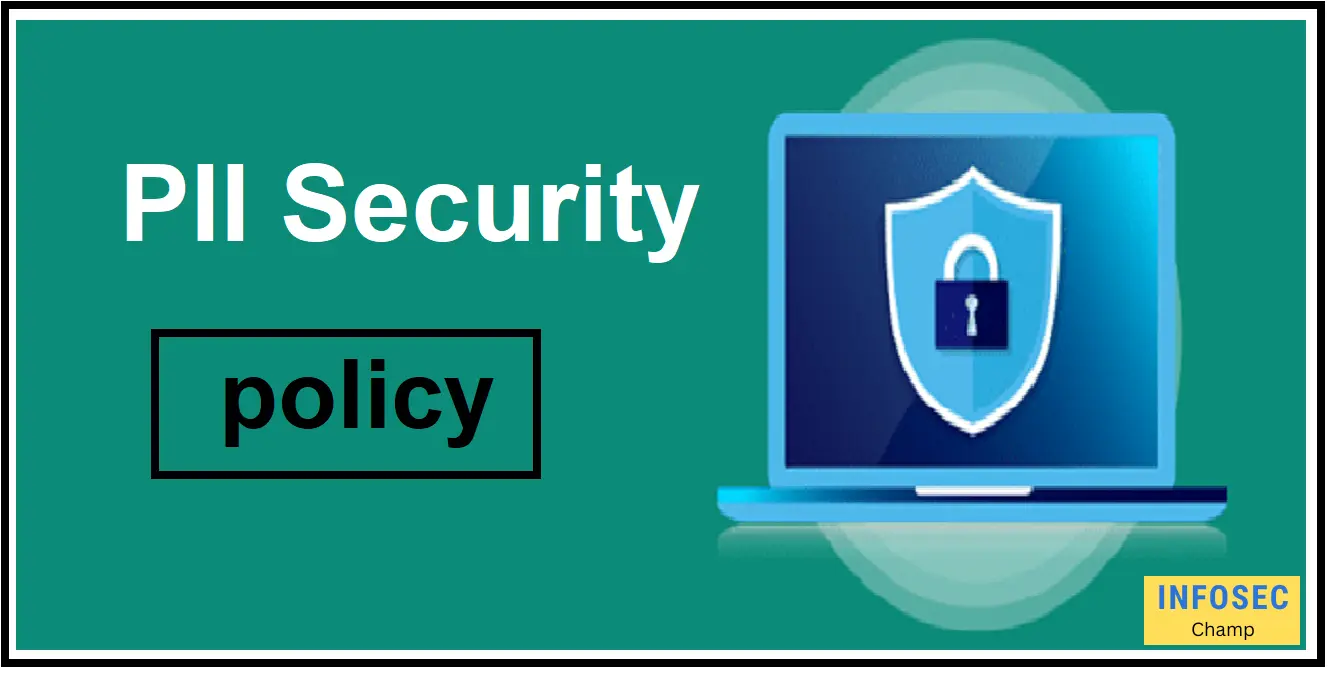
What role does the PII security policy play in protecting Personally Identifiable Information?
In order to safeguard Personally Identifiable Information (PII) from security lapses, unauthorized access, and other risks, a solid PII security policy is essential. Information that may be used to identify a specific person, such as a name, Social Security number, date of birth, or financial data, is referred to as personally identifiable information (PII).
An organization may make sure that all of its employees are aware of the value of protecting sensitive information and the precautions that must be taken to avoid data breaches by putting in place a well-defined PII security policy. This policy should specify how to handle and store personally identifiable information, as well as how to transfer data securely and properly dispose of it.
Best practices for PII protection should be established as one of the main elements of a PII security policy. The use of encryption, secure authentication procedures, and the use of technology that prevents data loss are some of the best practices that should be followed. Regular employee training and instruction on the proper management of PII as well as the repercussions of breaking the policy should also be required by the policy.
Ensuring compliance with legislative obligations for PII protection is another crucial component of a PII security policy. Sensitive information protection regulations vary by industry and jurisdiction, and firms should be able to comply with them with the use of a robust PII security policy. This involves abiding by privacy regulations, like the California Consumer Privacy Act (CCPA) in the United States and the General Data Protection Regulation (GDPR) in Europe.
The knowledge that a business has taken the appropriate precautions to secure sensitive information can give organizations a sense of confidence if they have a PII security policy in place. Customers and clients, who are becoming more worried about the security of their personal information, might benefit from this by feeling more trusted.
Organizations should periodically review and update their security procedures to make sure they are successfully protecting PII in addition to developing a PII security policy. This entails doing routine security assessments, updating hardware and software, and using the most recent best practices for ip security.
In conclusion, a robust PII security policy is essential for safeguarding Personally Identifiable Information (PII) from security lapses and illegal access. Employees are given a clear knowledge of the value of safeguarding confidential information as well as the precautions that must be taken to avoid data breaches. To guarantee that companies continue to comply with legal obligations and properly secure PII, regular updates and evaluations of the policy and security measures are necessary.
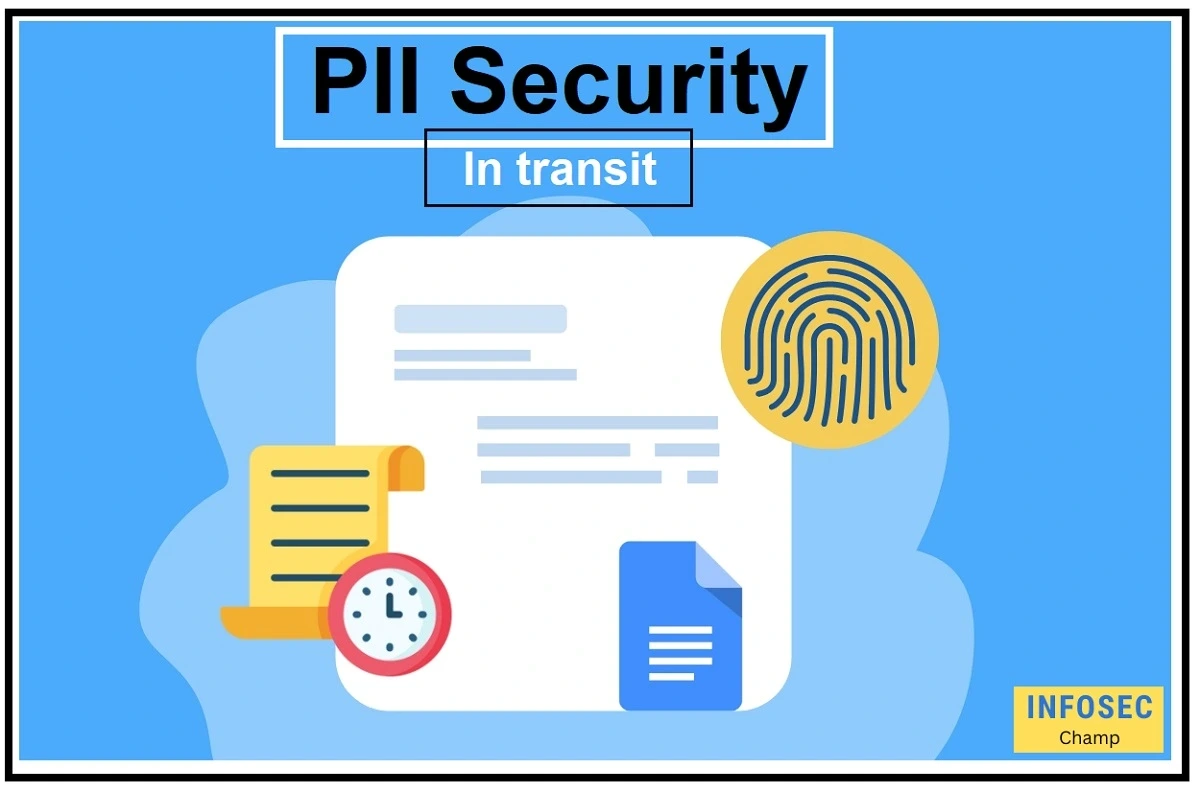
Can you explain the process of protecting PII during data transfers?
To guarantee the confidentiality, privacy, and security of sensitive data, it is essential to protect Personally Identifiable Information (PII) throughout data transfers. PII stands for personally identifiable information, which includes details like a person’s full name, date of birth, social security number, home address, and financial information. It is crucial to put safeguards in place to prevent unwanted access to PII during transit due to the rising frequency of data transfers.
The steps for safeguarding PII during data transfers are as follows:
- Encryption: An essential element in securing PII during data transfers is encryption. Data is converted into an unreadable format through encryption, making it considerably more difficult for unauthorized parties to access private information. Hashing, symmetric encryption, and asymmetric encryption are a few of the available encryption algorithms and techniques.
- Data Masking: Data masking is the process of substituting sensitive data with fictional data that resembles the original but is not sensitive, sometimes referred to as data obscuration or data masking. As a result, there is less chance of sensitive data being lost or stolen, which is helpful for protecting PII during data transfers.
- Secure transfer protocols: By enabling the secure connection between two systems, secure transfer protocols like Secure File Transfer Protocol (SFTP), HTTPS, and Secure Shell (SSH) aid in the protection of personally identifiable information (PII) during data transfers. These protocols authenticate the identities of the systems participating in the transmission while encrypting the data being communicated.
- Access Controls: During data transfers, access controls like user authentication and authorization assist prevent unauthorized access to PII. For instance, access to and transfer of sensitive information should only be permitted to authorized individuals, and all such transfers should be recorded for auditing purposes.
- Data Loss Prevention (DLP) Solutions: Data loss prevention (DLP) solutions can be used to secure personally identifiable information (PII) during data transfers because they are made to stop sensitive data from being lost or stolen. When sensitive data is transported outside of permitted locations, DLP solutions monitor data transfers and notify administrators.
- Network segmentation: To lessen the risk of unwanted access to sensitive information, a network is divided into smaller sub-networks through the process of segmentation. During transfers, PII is separated from other data to make it considerably more difficult for unauthorized parties to obtain this information.
- Regular Security Audits: Regular security audits can assist in identifying areas for improvement in the safeguarding of PII during data transfers and enable enterprises. Audits can also guarantee that all systems and procedures involved in data transfers adhere to laws and industry standards.
PII protection during data transfers is a crucial component of information security, to sum up. Organizations can lower the risk of unauthorized access to sensitive data and safeguard the privacy and security of their stakeholders, including customers, workers, and partners by employing the appropriate policies, protocols, and technology.
What are the consequences of not protecting PII as per the requirement?
There may be serious and far-reaching repercussions if Personally Identifiable Information (PII) is not protected as required. PII stands for personally identifiable information, which includes details that can be used to identify a person, such as full name, social security number, address, and license number. Protecting PII has taken on greater significance in the current digital era. Businesses must take proactive actions in light of the rising frequency of data breaches to safeguard the personal information of their consumers and keep their trust.
Fines and Penalties
Financial penalties are one of the repercussions of failing to protect personal information as required. The protection of personally identifiable information (PII) of customers is mandated by law in many nations. Businesses risk receiving hefty fines if they violate these laws. According to the General Data Protection Regulation (GDPR) of the European Union, for instance, organizations that violate data protection laws may be fined up to 4% of their annual global sales or 20 million euros, whichever is larger. The Health Insurance Portability and Accountability Act (HIPAA) and the Payment Card Industry Data Security Standard (PCI DSS) in the US allow for fines to be imposed on organizations that violate data protection rules (PCI DSS).
Loss of Trust and Reputation
The erosion of trust and reputation is a serious side effect of failing to preserve PII. Customers that do not have their PII securely protected are at risk of fraud and identity theft. Their credit history may also be harmed, which could lead to financial losses. Customers can decide to do business with another company if they no longer have faith in the one that failed to protect their information. A company’s capacity to draw in new clients and keep hold of current ones may suffer from a loss of reputation and trust.
Legal Liability
It may also put you in legal hot water if you don’t preserve PII as required. A company could be held accountable for any harm brought on by a data breach if its PII security measures fall short of expectations. Providing clients with compensation for any financial damages they sustain as a result of the breach may fall under this category. In addition, a company may be subject to legal action if it is discovered that it is not complying with data protection rules.
Impact on Business Operations
The operations of a company may be impacted by the results of failing to protect PII. While a company works to recover from the attack and secure its systems, a data breach may cause a prolonged system outage. This downtime can have a detrimental effect on the company’s reputation in addition to causing lost sales and diminished production. Additionally, companies could need to invest a lot of time and money into resolving the issue and enhancing their PII security protocols, which would take resources away from other crucial duties.
In conclusion, organizations must take PII security seriously and make sure they are protecting their customers’ sensitive information in accordance with the law. Serious repercussions, including fines, legal liabilities, a loss of reputation and trust, and detrimental effects on corporate operations, may follow from failing to comply. Businesses should establish strong PII protection measures, such as creating a detailed PII security policy, routinely training staff members, and conducting security audits frequently to make sure they are staying on top of the most recent security risks. Businesses can safeguard their clients’ personally identifiable information (PII) and uphold their confidence by taking these proactive measures for PII security best practices.
Can you give an example of a successful implementation of PII security best practices in your organization?
Implementing PII security best practices is necessary to safeguard sensitive data and lower the risk of data breaches. Numerous crucial variables must be taken into account while establishing PII security best practices in a business.
A thorough PII security policy is essential, and it should detail the particular security precautions taken to protect personally identifiable information as well as emergency management procedures. For continuing effectiveness, this policy should be periodically reviewed and revised.
For PII security, it’s also crucial to comply with data protection laws like GDPR or HIPAA.
Additionally, strong technical safeguards like firewalls, encryption, and multi-factor authentication must be implemented. Regular audits and reviews of security can help find and address issues.
To increase PII security, personnel education is essential in addition to technical measures. Training on recommended practices, such as how to create secure passwords and be wary of phishing, can fall under this category.
To successfully adopt PII security best practices, a comprehensive approach that includes technology solutions, policies, procedures, and staff education is required. Organizations can lower the chance of data breaches and safeguard sensitive information by implementing a thorough PII security policy.
In order to protect sensitive data and lower the risk of breaches, PII security best practices are essential. Implementing a thorough policy, adhering to rules, using robust technical safeguards, and training people are all ways to accomplish effective PII security.
